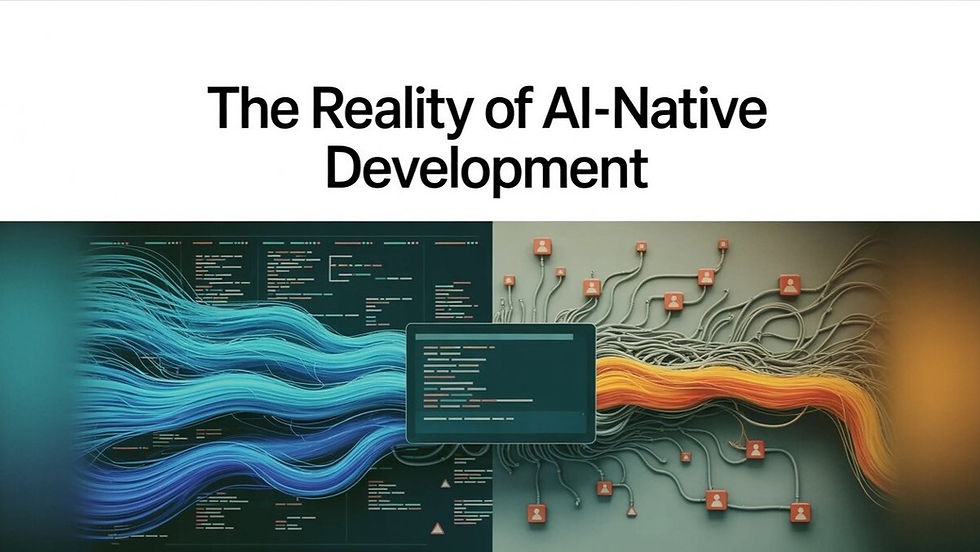The Five Pillars of Digital Transformation
- Apr 17, 2019
- 4 min read
Updated: Apr 26, 2019

Various industries are being disrupted by technology. This disruption is happening so fast that many leaders are unable to decide how to deal with disruption from startups as well as competitors that have begun the groundwork earlier. These five pillars of digital transformation function as a guide to executives on how to begin strategizing for their digital future.
Pillar 1 - Strategy: Establishing that digital solutions are embraced by all stakeholders

Before rushing to implement technologies that would solve short-term problems, executives and stakeholders should take a step back to fully realize what going digital means. The success of today’s most valuable companies such as Uber, Netflix, and Airbnb is not due to just having an app. Rather, it is the radical rethinking of their business in the transportation, entertainment, and accommodations industries (respectively) while utilizing technology to be able to scale or as a channel to deliver more value that has made them giants today.
Executives and decision-makers should have regular discussions about the current state of the business, and then revisit how their business fits in their industry. Some helpful questions during these sessions could be:
- What are we doing now?
- What are we best at doing now? Can we build on it using technology?
- Are there emerging needs that we can answer through technology?
The leadership and decision-makers should also pave the way for the rest of the company to participate in the transformation of the company and rethinking policies and processes. McKinsey’s 2016 study shows that 70% of digital initiatives fail due to company cultures and practices that don’t allow for collaboration, clear communication, and experimentation. When even rank-and-file employees and middle managers understand the company strategy, vision, and direction, they can become more empowered to make customer experiences more delightful while ensuring operational efficiency.
Pillar 2 - Digital Experience: Connecting directly with customers and partners in various ways
When customers feel that the company goes out of their way to make even tedious transactions smoother and more seamless, they tend to talk about their experiences more positively. The more positive experiences a customer has with a company, the more likely that they will advocate the company to their network and the stronger their loyalty to the brand. Conversely, the worse the experience, the more likely they are to spread the negative experiences leading to a huge impact on direct and indirect sales.
Through various technologies such as chatbots for customer support and mobile apps for self-service, customers can get the information, products, and services they need much more instantaneously. This can also lead to shorter consideration periods, positive feedback and ratings, and more business from these customers and their networks.
Pillar 3 - Core Systems: Boosting operational efficiency and productivity

Amazing customer experiences can only be delivered only when back offices run as efficiently as the customer-facing offices. When combined with rethinking processes, technology can improve revenues while lessening cost. Having systems for important back-office processes such as procurement, finance, and logistics can simplify and speed up processing times needed to support the business. In addition, robotic process automation (RPA) can ease workload and congestion by doing manual, repetitive, and error-prone tasks. This frees up full-time equivalents or FTEs to focus on more meaningful work such as data analysis and other more complex work.
Pillar 4 - Data: Utilizing real-time data to enrich experiences and guide strategy
Agility is key to keeping up with disruption, and this is only possible if leaders and decision-makers utilize their data for planning and strategizing.
Leaders have to revisit the way they view their data and how they interpret it and to be mindful of biases that might cloud their judgment. Rather than using data to justify past decisions, they have to revisit, redefine, and recalibrate –if needed- the current purpose and desired outcomes for their customer and their business both for the short-term and long-term. Only then can they come up with key business questions which when answered by data, can point them to insights that would allow them to quickly decide which actions to be taken to align themselves to their purpose or desired outcomes.
Pillar 5 - Cybersecurity: Safeguarding digital assets and ensuring business continuity

A 2017 survey from PWC Australia shows that 87% of consumers will take their business elsewhere if they don’t trust that a company is handling their data responsibly. Beyond compliance to various laws such as the GDPR for Europe and the Data Privacy Act in the Philippines, companies should ensure that transparent, easy-to-understand policies are in place to govern data usage and access to build confidence and trust with their customers.
Crippling attacks such as the WannaCry ransomware virus of 2017 should make it clear to decision-makers to invest in more stringent cybersecurity measures, regardless of industry type. This would enable the business to mitigate cybersecurity risks efficiently and with minimal interruption. One example of speedy isolation and recovery was Boeing when some yet unpatched units were infected with the crippling ransomware. With all hands on deck and immediate application of fixes, the ransomware was contained and the rest of their military and service units remained unaffected.
Putting them all together
At the core of digital transformation is the customer experience and how the business can best position itself to improve their customer journeys. While there are many ways to begin a digital transformation journey, businesses and enterprises should always go back to how they could ease their customers' needs and pains through a thorough review, data gathering, experimentation, and quick decision making. Every person in the company should also be aware of their role in the company’s journey and ensure that they responsibly use and safeguard their customers’ data.
The Five Pillars of Digital Transformation was originally published on QuickReach.co




Comments